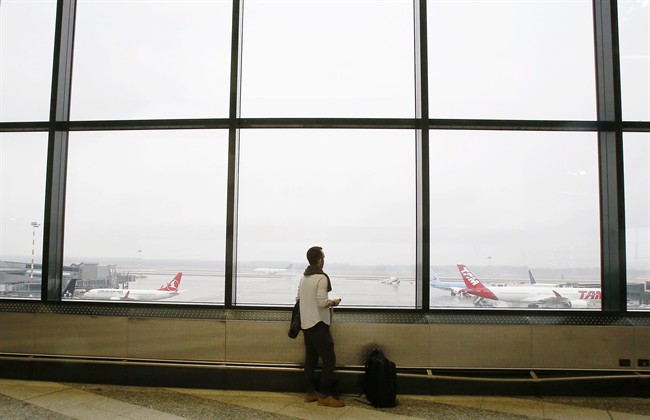Canada is a tough market for low-cost airlines thanks to its sparse population, hefty taxes and fees, and lack of competition.

So consumers might be happy to hear of WestJet’s plans to launch a no-frills, ultra-low-cost-carrier by the end of the year.
“Our new airline will provide Canadians a pro-competitive, cheap and cheerful flying experience from a company with a proven track record,” said Gregg Saretsky, WestJet president and CEO in a statement.
But don’t get too excited, say experts.
“I’m not super optimistic,” said Changmin Jiang, assistant professor at the University of Manitoba’s Asper School of Business, noting that Canada has seen a number of low-cost carriers come and go.
“History has shown it’s very hard to maintain.”
The scoop on low-cost-carriers
Travellers may already be accustomed to being nickel-and-dimed while flying, but ultra-low-cost carriers take it to the next level.
Canada’s current low-cost carrier New Leaf Travel likes to say that its basic fare gets passengers a seat and a seat belt — you’re on your own for everything else. That includes fees for a carry-on bag, and even printing out a boarding pass at the airport.
READ MORE: WestJet, Air Canada facing lawsuit over bag fees
“There’s a chunk of people who say, ‘I just want you to move me from point A to point B,'” said Marvin Ryder, professor of marketing at McMaster University’s DeGroote School of Business.
“It really forces people to think about, what is the value of these other services?”
Secondary airports are often key to the low-cost model — flying out of Hamilton, Ont., instead of Toronto, or Abbotsford, B.C., instead of Vancouver.
While they tend to be out of the way for travellers, secondary airports tend to be less costly overall, said Vijay Bathija, president and CEO of John C. Munro Hamilton International Airport.
“We have an uncongested airport, cheaper parking,” Bathija said. “Combining that with low-cost travel encourages middle-class families, students, millennials to travel more frequently.”
Bathija said it’s clear the demand for ultra-low-cost travel exists and believes increased competition could result in lower fares for all travellers.
“Keeping costs low will actually help to spur demand because it helps to keep the fares competitive,” he said.
WATCH: Canadian travellers slapped with $25 fee to check first piece of luggage
How it impacts other fares
Consumers could potentially gain not just from WestJet’s new endeavour but also from the ricochet effect on competitors.
Flight prices for routes serviced by New Leaf Travel dropped after the low-cost carrier entered the market in 2016.
However, there’s a chance that airfares could actually increase due to a new low-cost, bare-bones competitor, said Alex Chang, data scientist with Hopper, an app that uses big data to predict and analyze airfare.
After United Airlines introduced its basic economy fares, Chang said, the price for an economy seat — what used to be the airline’s base fare — crept up.
READ MORE: Shrinking airline seats, no free meals raise alarm, says passenger rights advocate
“They’ve essentially just increased the price and cut the service,” Chang said.
As more pick-and-choose fees become the norm, there’s a risk that what Canadians travellers now consider bare-bones service could one day be considered premium.
“Because everything is now unbundled and you have to pay for everything… you essentially have the option of paying what you would have paid in the past for lower service,” Chang said.
WATCH: Air Canada and WestJet slash fares – but only on days where NewLeaf is flying

Why Canada misses out on cheap airfare
The low-cost models that work in Europe and the U.S. simply won’t fly in Canada, the experts say — we just don’t have the population.
“Our population density is too low to sustain a very high level of competition,” said Changmin Jiang.
Hefty fees are another challenge Canadian carriers grapple with.
“Canada is kind of notorious for the high taxes and fees that the aviation sector has to pay,” said Jiang.
Policy and infrastructure also play a role. The federal government vowed last fall to introduce legislation allowing international companies to own up to 49 per cent of an airline in Canada, up from the current limit of 25 per cent.
This could be the key to increasing competition in the industry.
WATCH: NewLeaf feels muscled out of airline market

For the time being, consumers should jump on the opportunity for no-frills, low-cost fares — while they last.
“Customers will probably be able to get some really good deals at the beginning,” said Jiang. “So my suggestion would be that while you have the chance… just do it.”




Comments